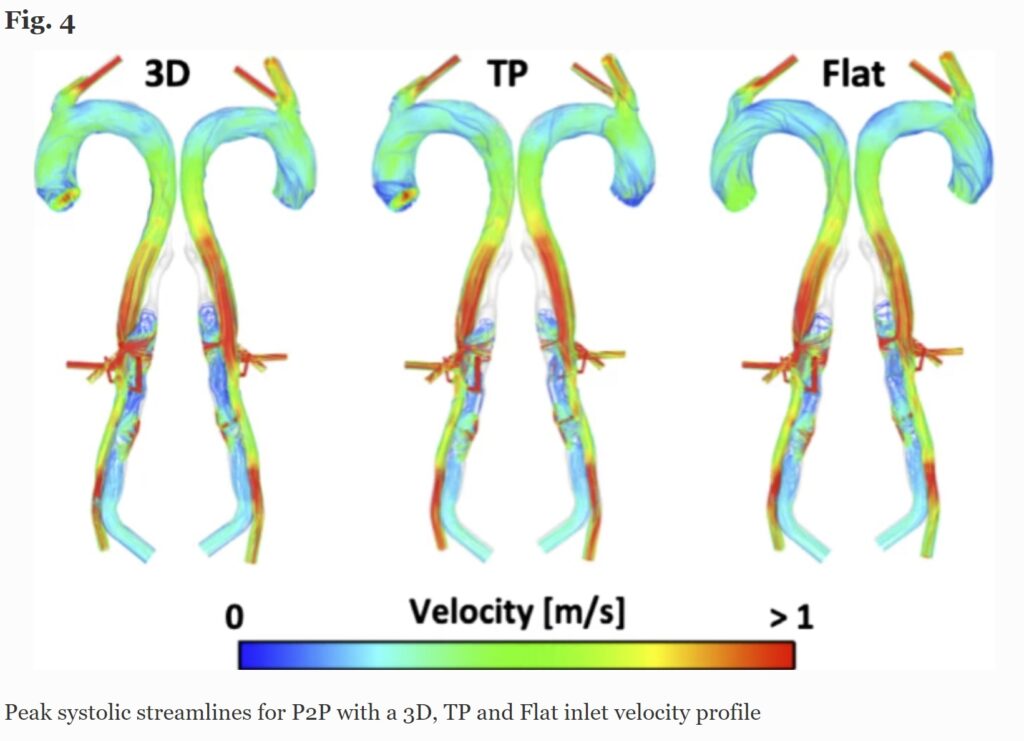The influence of inlet velocity profile on predicted flow in type B aortic dissection
In order for CFD(computational fluid dynamics) to provide quantitative parameters to aid in the clinical assessment of type B aortic dissection, the results must accurately mimic the hemodynamic environment within the aorta. The choice of inlet velocity profile (IVP) therefore is crucial; however, idealised profiles are often adopted, and the effect of IVP on hemodynamics in a dissected aorta is unclear.
This study examined two scenarios with respect to the influence of IVP(inlet velocity profile)—using (a) patient-specific data in the form of a three-directional (3D), through-plane (TP) or flat IVP; and (b) non-patient-specific flow waveform.
The results of this study suggest that 3D, TP(through-plane) and flat IVPs all yield reasonably similar velocity and time-averaged wall shear stress results, but TP IVPs should be used where possible for better prediction of pressure.
Reference
Chlöe Harriet Armour, Baolei Guo, Selene Pirola, Simone Saitta, Yifan Liu, Zhihui Dong & Xiao Yun Xu, "The influence of inlet velocity profile on predicted flow in type B aortic dissection", Biomechanics and Modeling in Mechanobiology, Published Online (2021) pages481–490.
Go To the Journal Page
